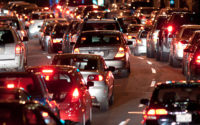Is the Parking Meter Price Right?
While policy makers search for a way to cut down traffic in one of the most congested cities in the world, Los Angeles drivers wait. An earlier blog post of the Lowe Down, Is the Commuting Price Right?, explored the per-mile tax idea that policy makers have to cut down on congestion. While this idea is still being discussed, what if there were a faster way to deal with congestion in LA right now?
Currently, Los Angeles drivers rank second in searching for parking spaces on-street and off-street. LA drivers spend on average 12 minutes looking for on-street spots, and 11 minutes looking for off-street spots, according to INRIX’s 2017 Parking database. Searching for parking spots in cities further crowds city centers, worsening congestion. In fact, during peak traffic hours, an average of 68% of drivers are searching for parking, according to a study by UCLA professor Donald Shoup. One possible solution to congestion is reducing these search times.
For nearly a decade, Los Angeles has attempted to reduce this “parking search” traffic through LA Express Park, a program that adjusts parking prices in response to demand and publicizes available parking spaces. The program does this through both a phone app and a computer website. The goal of the program is to ensure that parking occupancy is raised to a level of 70-90%, depending on the time of the day. This level of occupancy balances between maximizing usage and ensuring spots are available so as to minimize the need to circulate in search of a spot. The program claims success in increases in occupancy levels, with an average rise from 57% to 70% during enforcement hours, according to Peer Ghent, project manager for LA Express Park.
Looking at parking meters in Los Angeles provided by the City of Los Angeles Parking Meters dataset over a week, the Lowe explored if LA Express Park was doing what it claimed to do. With 3665 data points on parking meters, plotting the data proved to show areas of significantly lesser occupancy. One area of lesser occupancy was clustered around the Fashion District of LA. On average, the city had an occupancy level of 52.82% for all parking meters, and half the meters had occupancies between 39.01% and 67.38%. The occupancy levels for the parking meters were approximately normally distributed though slightly left skewed.
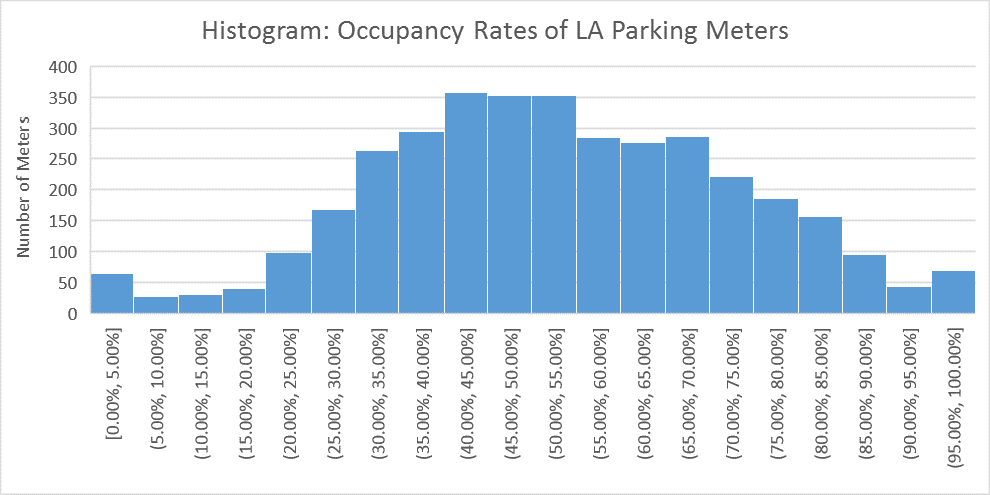
Overall, the occupancies for the meters were fairly concentrated around the average, displaying a modest range. Our average occupancy figure was lower than the cities since the data we collected spanned six entire days while the city reports occupancy during enforcement hours.
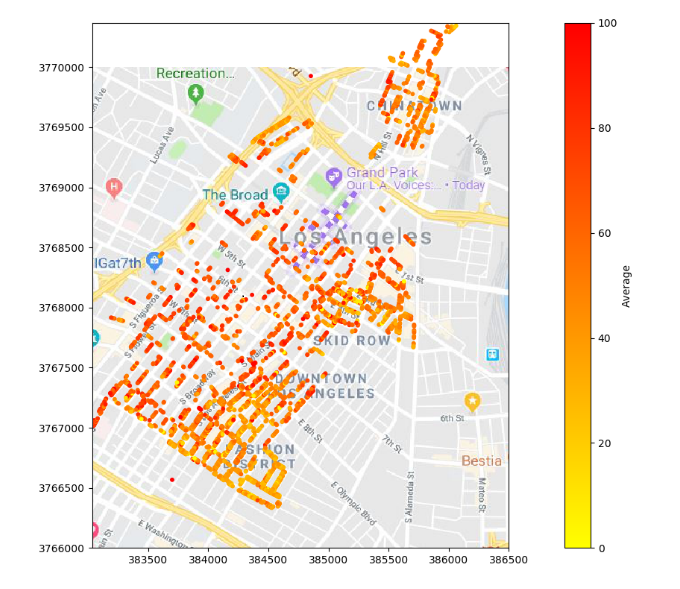
Noting significantly lower occupancy levels in the Fashion District, we looked at LA Express Park’s own map of pricing for that area. Prices were lower, as shown by the lighter green, so seemingly the program was detecting lower occupancy rates, and pricing the spots lower accordingly.
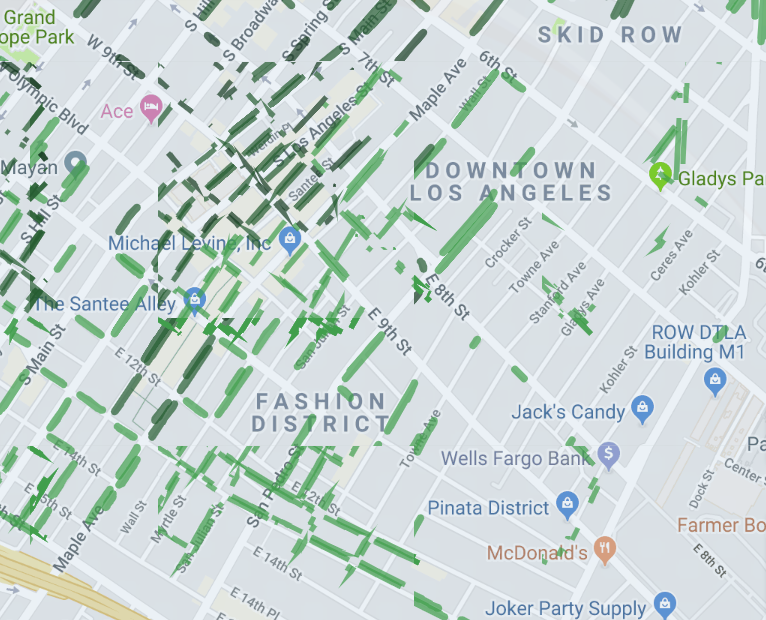
Curiously, this relationship is not apparent in a scatterplot of the data.Parking meter prices were, on average, $1.96 with half of prices falling between $1 and $2.5. A regression analysis indicates that changing the price by a dollar correlates to an occupancy level change of 1.88%. This result contradicts the maps which seem to indicate that less-occupied districts have lower prices. Instead, it is consistent with a LA Park doing an excellent job of adjusting price so as to equalize occupancy rates across districts with heterogeneous parking demand.
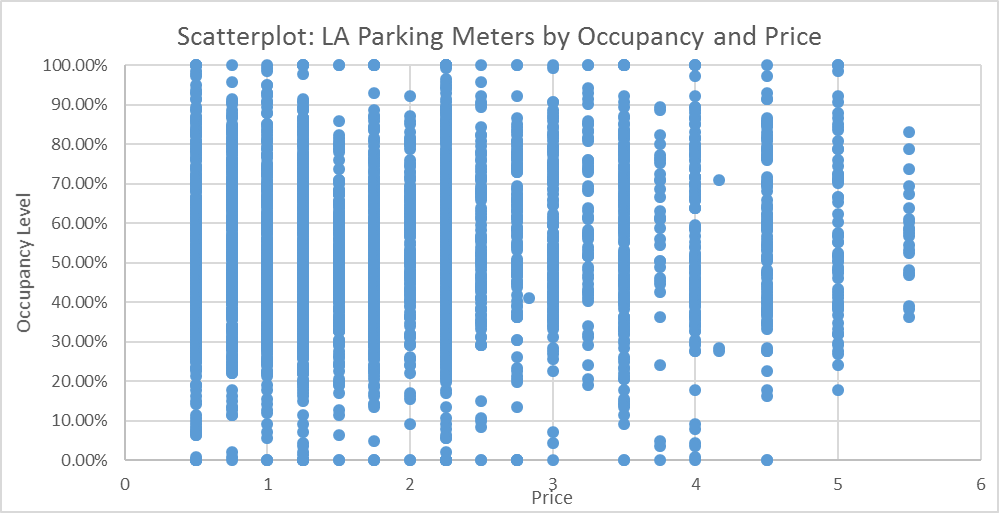
*When the prices ranged, the maximum and minimum was averaged for this graph.
LA Express Park appears to be effective at changing prices based on occupancy. In order for LA Express Park to function at maximum efficiency, public awareness of where open park spaces are and the prices of those spaces is critical. Based on this demonstrated effectiveness, broadening the area covered by the program and publicizing the information more widely could lead to further improvements in parking and congestion.


